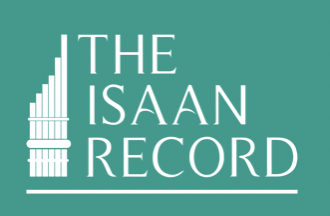
It was clear from the moment that Noi Don Kha Pracha Samakkee School in the Khong Chai District of Kalasin Province announced in their advertisement that something was again wrong in Thai education. The rural school was looking to hire teachers in the fields of English and computers for the slim sum of 5,000 baht per month. Netizens balked at the rather low monthly salary (which might have been lower than Thailand’s minimum wage) and lamented the high workloads of Thailand’s school teachers.
At Ban Nong Rawiang School in Nakhon Ratchasima Province, which struggled with just three full-time teachers to handle 65 students ranging from kindergarten to grade six, the Board of Education and parents of students agreed to fund a contract teacher to help at the kindergarten level at a 8,000-baht-a-month salary. The school held a thod phapa (robe-offering) ceremony to raise funds for the teacher, an unorthodox goal for this kind of ceremony. At the school, teachers and the principal have high workloads. One teacher claimed she’d had to resort to selling goods online to supplement her income.
While the Thai public’s reaction to what is becoming an increasingly common occurrence within the Thai school system has been normal, it is important to take a closer look at the consequences of contract teaching and even larger problems, such as general malaise and rising debt among Thai teachers. The reasons why Thai schools hire contract teachers is complicated, however much of it has to do with how the Ministry of Education allocates teachers to schools.

Sluggish bureaucracy and failed initiatives
Generally, a ratio of 20 students per teacher is a national benchmark, but the wheels of bureaucracy at the Ministry often work far too slow. As the number of students cannot easily be predicted, some schools—perhaps even Noi Don Kha Pracha Samakkee—have no choice but to use contract teachers when enrollments rise. In 2020, the school only had 65 students, therefore the Ministry-provided subsidy for hiring teachers was low. Normally, when teachers are assigned to smaller, rural schools like many in Isaan, they are asked to stay at least two years. Once that period is over, many request to be redeployed in larger, more urban schools.
Because of a perpetual funding crisis, teachers are often asked to do more administrative work on top of their subject area specialities and rising class sizes. On Teacher’s Day in January, teachers at government schools issued a seven-point manifesto for education reform, which included demands for salaries for support staff to maximize time teachers spend with their students, a reduction of unnecessary assessments and tasks for teaching and learning, as well as boosting teacher numbers to address staff shortages.
Tanawat Suwannapan, a teacher at Rajadamri School in Bangkok, noted in an email exchange with me that while teachers have earned a special status in Thai society, particularly among those without education, Thai society has also placed a special burden on them.
“It seems like teachers are powerful,” he wrote, “but on the other hand Thai teachers have been oppressed by discourse and social expectations like sacrifice and tolerance, where without any resources, they aren’t able to say, ‘I can’t.’”’
In many respects, a dysfunctional Ministry of Education is to blame for much of what ails education in Thailand. What’s left can be placed on inadequate sources of funding and misappropriation of that funding. The Thai government is famous for its failed initiatives aimed at addressing a number of persistent education challenges.
A few years ago, then-Education Minister Teerakiat Jareonsettasin created the ICU Schools Project, aimed to help over 5,000 small schools whose standards were deemed deeply troubling. The project goal was to hire more teachers, as well as renovate brick-and-mortar structures. However, like most initiatives during the junta-led government, less than 2,000 had been helped in any capacity.
A revolving door of Education Ministers has been common, most recently with Nataphol Teepsuwan, who was removed from office and jailed for his involvement in PDRC-led street protests. When a minister exits the office, quite often the incoming minister has a much different approach or set of personal agenda items.
Underfunded and unequal
Thailand is supposed to mobilize resources under Chapter 8 of the National Education Act, which allows state and local administrative organizations to levy taxes. The problem is that these funding mechanisms are deeply unpopular politically. Late last year, the government kept the land and building tax at already low rates for another two years. Residential and vacant land is assessed at 0.01% and 0.7% respectively, compared to 1.1% of fair market value in the United States. Attempts to reform the Act or to alter the funding mechanisms have been met with tough criticism. There is a lack of political will to address these concerns, while a change in tax rates might place an undue burden on poorer landowners.
Historically, Isaan and much of the north are underrepresented in terms of public spending. In a 2012 World Bank report, “Improving service delivery, Thailand: Public finance management,” Greater Bangkok, which represented only about 17 percent of the population and 26 percent of GDP, accounted for 72 percent of expenditures. While the Northeast accounted for 34 percent of the population, it accounted for just 5.8 percent of total expenditures.
The same report shows that Bangkokians received per capita 510% more from the government’s central spending on education than Isaan people. In the decade following the report, it’s unlikely much has changed.
Tougher standards and attrition are also causes of teacher shortages. According to Dr. Prawit Erawan, Secretary-General of the Office of Teachers and Education Personnel Commission (GTEPC), Thailand has a total of 400,000 teachers: 280,000 are professional-level teachers (K2). Out of every ten teachers, seven are those with proper academic standing, while the other three are new teachers or below K2.
This year, more than 40,000 people passed qualifying exams, but that was out of more than 140,000, or just 28 percent of those who took the exam were successful. Shortages were also related to the COVID-19 pandemic, as exams for government-appointed teachers were delayed. While there were over 170,000 applicants, 10,000 positions last year remained vacant, according to the Office of the Basic Education Commission (OBEC).
Teachers weighed down by debt
Thailand’s teachers, in addition to lower-than-average salaries, also struggle with large consumer debt. Of more than 900,000 present and retired teachers across the country, more than 1.4 trillion baht is owed to creditors–an average of more than 1.5 million baht per person (about $45,000).
The Ministry of Education has been working with cooperatives to lower interest rates for teachers, in a pilot program that would later be introduced nationwide. Of the 108 teacher’s savings cooperatives in Thailand, only thirteen have been charging interest rates of 5% or less, while 13 have been charging as much as nine percent. The program also aims to restructure existing debt and lower interest rates for retired teachers over the age of 75 to below one percent.
Also at issue is the lack of control over the amount that can be lent to teachers when they attempt to borrow money from financial institutions. Ministry officials have looked at policies that would restrict borrowing to 30 percent of a teacher’s annual salary. Part of the consumer debt problem is related to income inequality, of which Thailand ranks the highest in the world. Inequality is stark between urban and rural areas.
Although compensation for contract teaching is often minimal, the possibility can be attractive to families in debt.
“Your parents are getting older every single day. Their debt from agricultural investment has to be paid,” wrote Tanawat. “If there is an opportunity that [allows you to] take care of your parents, you will grab this ladder” [to contract teaching] which has better benefits and provides access to “the financial credit to pay your parents’ informal loans.”
Thailand’s teacher shortage and burgeoning debt crisis is unlikely to disappear anytime soon, as demographic changes, budgetary restrictions, centralization of resources and policy at the ministerial level, and a lack of political will are powerful structural and political barriers.
Despite Thai Prime Minister Prayut Chan-o-cha’s promise that 2022 would be the year to tackle Thailand’s massive household debt problem, teachers, while among the country’s most respected professionals, will remain burdened for the immediate future.






